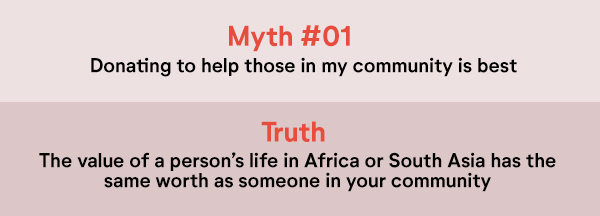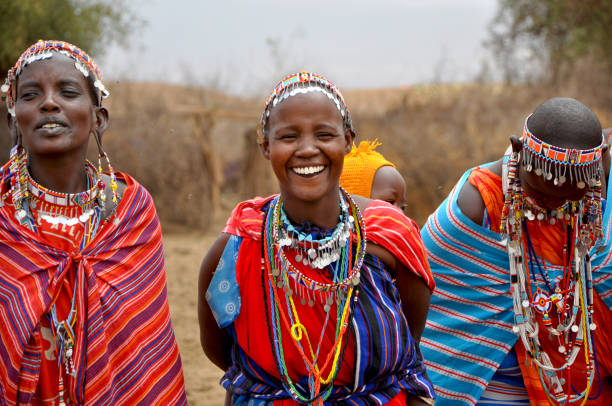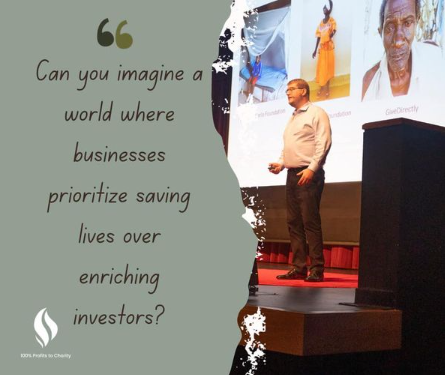Years ago, when I was President of The Men’s Wearhouse, we ran a “myth” campaign on television. The idea was to counter the inaccurate perception among non-customers that our stores were big warehouses rather than attractive environments with excellent customer service. The campaign was very successful, because the myths were, in fact, misconceptions and the reality of our stores and the customer experience was quite different than what people expected.
Thinking back on this has inspired Stacey Black (our marketing director) and me to develop a myth campaign about philanthropy. We hope to counter what Peter Singer and the rest of our Team view as misconceptions about philanthropy and, in particular, contradictions between people’s values and how they donate to nonprofits. The first “myth” we are tackling is below.

Here is the problem as we see it. You must reconcile two competing beliefs/values: “Charity begins at home” vs. “Every life has equal value.” There is no doubt that there is tremendous suffering in most of our communities. And of course the same can be said of the suffering of people living in extreme poverty overseas, where parents watch their children go hungry and die or suffer from diseases that are easily treated in more prosperous countries.
Using our Impact Calculator, you can see what it costs to cure someone of blindness (see Seva or The Fred Hollows Foundation) or to protect a child from malaria (see Against Malaria Foundation or Malaria Consortium). In the United States, relieving the suffering of a family that is homeless, or an uninsured child with leukemia, costs more than is required to save 50-100 children’s lives in the developing world.
What should we do in the face of these uncomfortable realities? For some of us, the choice is to donate exclusively to The Life You Can Save’s Best Charities. But for people who are uncomfortable with this approach, we suggest making some of your donations to our Best Charities and some to your preferred local nonprofits. This can be accomplished by giving more than you have done historically, using the extra money for international charities; or you can take the amount of money you normally donate and divide it between local and international nonprofits.
We challenge the idea that “charity begins at home.” We understand the compassion that is so compelling of seeing local problems that go unaddressed, but we come back to the reality that if one believes that all lives have equal value, then we must act globally, at least with part of our donations, where the most good can be done for a fraction of relieving problems at home.
A crucial aspect of this new narrative is helping women globally, and a great time to begin doing that is International Women’s Day on March 8th. All of our recommended nonprofits provide interventions that improve women’s lives directly or indirectly. You can read about some of that inspiring work in this newsletter below. Personally, I believe that supporting women in the developing world is the single best way to immediately address unnecessary suffering and to begin building sustainable, growing economies.
Do Good. Feel Good.



